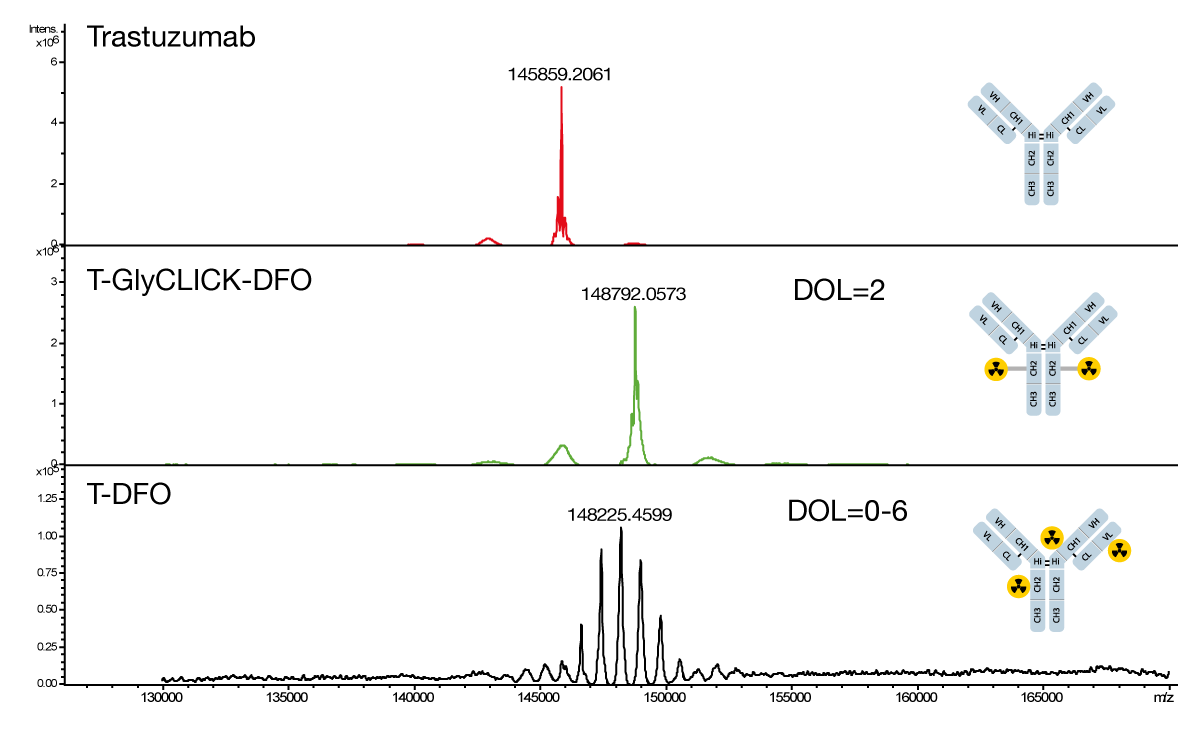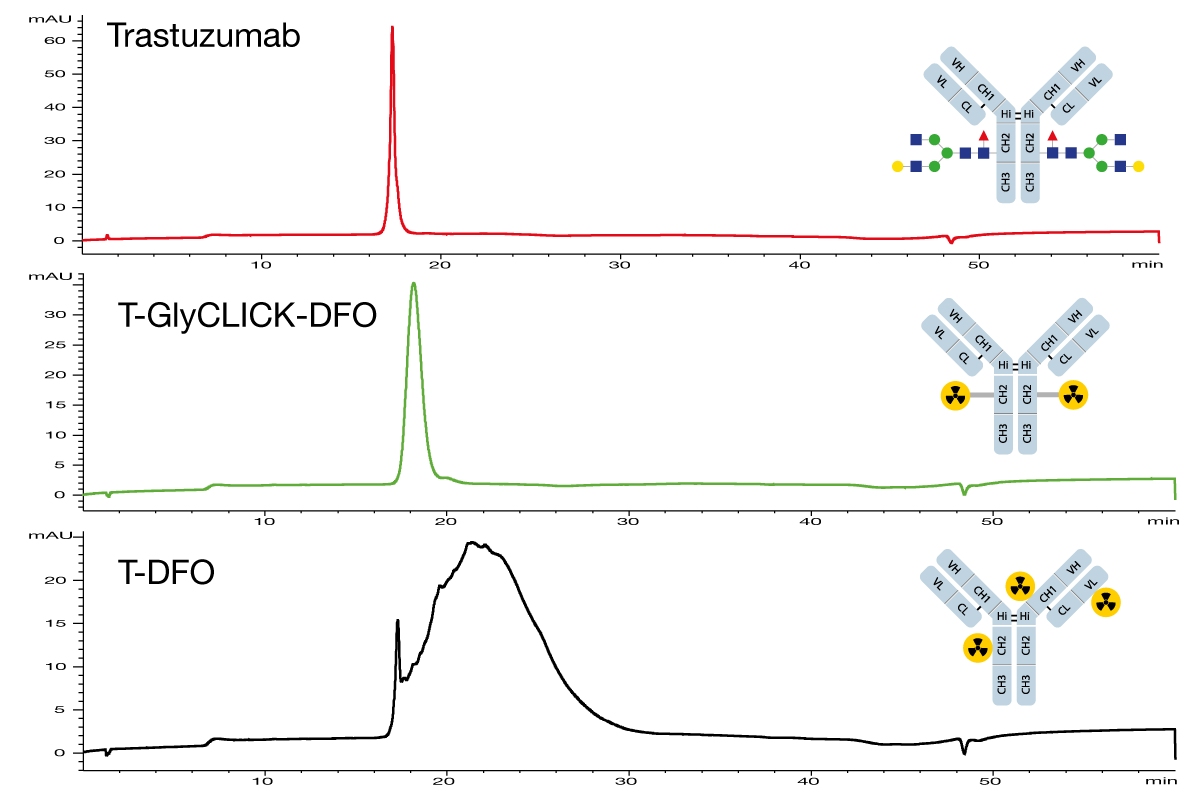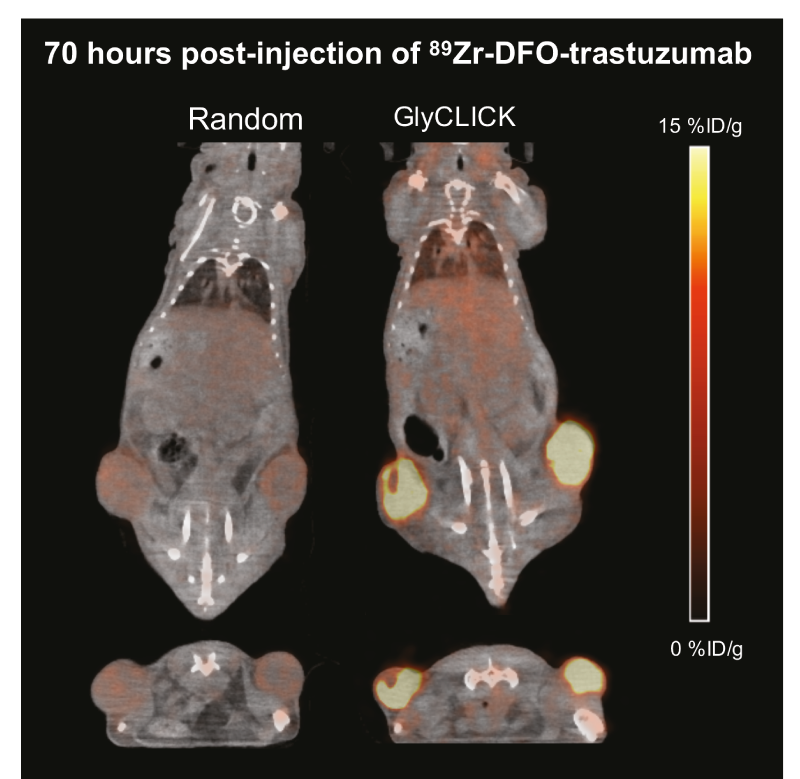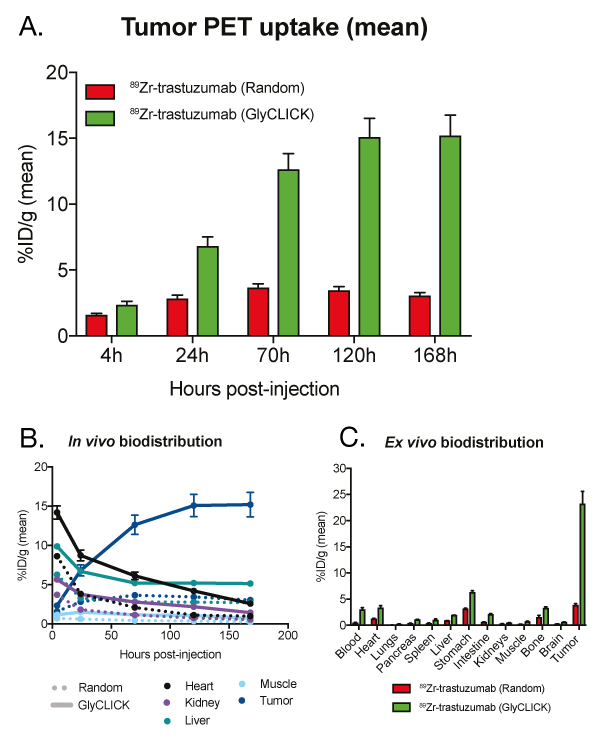In Vivo Immuno Imaging
Antibodies are powerful tools for in vivo immuno imaging applications. The quality and efficacy of the conjugated antibodies are crucial in order to obtain reliable and reproducible imaging results. GlyCLICK is a site-specific antibody conjugation technology that preserves the antigen binding affinity and increases tumor uptake in vivo while minimizing batch variations, delivering reliable imaging results.

Site-specific labeling using GlyCLICK
Reliable and quantitative conjugation is achieved with GlyCLICK for the generation of antibody conjugates with a consistent degree of label (DOL=2.0). Mass spec analysis was performed on trastuzumab conjugated with sDIBO-DFO using GlyCLICK (T-GlyCLICK-DFO) or randomly generated conjugates labeled at lysine residues using p-SCN-Bn-DFO (T-DFO) (Fig. 1). Results show a distinct mass shift for the intact antibody which verifies site-specific labeling by GlyCLICK with DOL of 2.0. Random labeling provided heterogenous conjugates with a varied DOL of zero to six.

Figure 1. Intact mass analysis of non-conjugated, GlyCLICK and randomly DFO-conjugated trastuzumab. Trastuzumab and randomly conjugated material was deglycosylated with GlyCINATOR. All samples were separated by RP-LC on BEH C4 column (Waters) and analyzed on Bruker Impact II ESI-Q-TOF. Mass spectra were deconvoluted using the MaxEnt algorithm.
Decreased hydrophobicity of GlyCLICK conjugates
The site-specific labeling achieved with GlyCLICK results in less hydrophobic conjugates as compared to that of random (lysine) conjugates. The conjugates were analyzed to estimate the difference in hydrophobicity using hydrophobic interaction chromatography (HIC). GlyCLICK conjugates eluted as a single peak with only a minor shift in hydrophobicity compared to unlabeled and randomly labeled trastuzumab which displayed a broad peak with more hydrophobic and heterogenous material (Fig. 2).

Figure 2. Hydrophobic interaction analysis of trastuzumab, GlyCLICK and random DFO conjugates injected on TSKgel® Butyl-NPR column (Tosoh Bioscience) in 25 mM NaP pH 7, 1.5 M ammonium sulfate and eluted with a salt gradient with 20% isopropanol. The random lysine DFO-conjugates were more hydrophobic and not resolved in the analysis due to heterogeneity.
GlyCLICK enhances tumor uptake in vivo
ImmunoPET combines positron emission tomography (PET) with the target specificity of antibodies to visualize radioactive tracers in vivo. Tumor uptake and biodistribution are critical properties of labeled antibodies being used as targeting agents in immuno imaging applications. PET imaging was used to evaluate the effect of GlyCLICK conjugates in vivoby analyzing 89Zr-DFO-trastuzumab labeled using GlyCLICK conjugation (DAR=2) or random labeling at lysines (DAR=0-6, average 3). Tumor bearing mice were injected with 89Zr-DFO-trastuzumab and PET/CT images were obtained (Fig. 3). A fivefold increase in tumor uptake and a significantly longer circulation time was observed in mice injected with GlyCLICK conjugates (Fig. 4).

Figure 3. Longitudinal PET/CT imaging in coronal (top) and axial (bottom) images of SK-OV-3 tumor bearing mice (N=4/tracer).

Figure 4. PET/CT imaging analysis of SK-OV-3 tumor bearing mice showing a) mean tumor uptake, b) image-derived biodistribution of 89Zr-DFO-trastuzumab in major organs and c) biodistribution ex vivo.
For details on pricing and how to order, please visit the GlyCLICK Product Page
 Download GlyCLICK Poster
Download GlyCLICK Poster
Robust Generation of Site-specific and Homogeneous Antibody Conjugates using GlyCLICK Download the poster


